2009 Swiss Cross, over the roof of Switzerland
- Peter van der Gugten
- Aug 29, 2009
- 44 min read

The time has come. The route is roughly planned, we are still working on the details. We follow the Via Alpina westwards to Lake Geneva. This route is also a tough one, but the passes are manageable
but the passes are manageable except for two, which will be a little more difficult. On the way back on the south side of the Alps, we will only be riding in pairs, as this is where we all need our experience and the safety of our horses. The food situation for the horses is not yet optimal, so if you know people along the route who also have horses, we would be grateful for their address and telephone number if they can help us with concentrated feed or hay.

8.8.2009
12 days to go until the start of our Swiss Cross Tour. And as is soon to become normal, a few difficulties have cropped up again this year. A fortnight ago on our luggage test ride in Engelberg, we had the pleasure of meeting two fellow ponies with a lone pony that was completely out of its mind with joy. The pony was not impressed by Flash's or Domingo's wedging hindquarters and tried, come hell or high water, to make friends. Which didn't go down well with our two whites. They just wanted to be left alone. My attempt to lock the pony in the pasture failed miserably, as I was able to hold him back to give Pat time to go through the gate, but I didn't know that the pasture wasn't closed at all, so the pony soon tried to climb up Flash or Domingo again. The second time I tried to tame the pony, Flash's hoof caught my left kneecap. At first I thought it was no big deal. Only after the pony was happily accompanied back to the stable by Domingo - Domingo ran off in the direction of the stable and the pony followed him standing - when I had locked the pony in his box together with the farmer - the top door should also be closed, otherwise he would be outside again - the owner said, did I realize that I could hardly put any weight on the leg. It's now been 14 days and I'm in good spirits that my knee will make it through the tour. But today Pahlavan got it. He suddenly went lame in the middle of a pleasure class at a show. For no reason and with no visible injury. Pat treated him and used her famous pellets. We'll see how things go tomorrow.

Our equipment
All our saddlebags are home-made from leather, without external buckles or straps. We have front panniers in which I transport my equipment and Pat Kraftfutter-Reserve for 2 days. In the front panniers I have a battery charger, communication parts, maps, mini wash saloon, spare halter, repair materials, emergency shoeing and fencing tools, rubber cleaning glove that can also be used to touch electric wire, spare fittings, two ointments and other small items, as well as space for snacks and drinks. Plus an emergency signal, warning light and reflective tapes. In addition to a first aid kit, Pat carries a homeopathic pharmacy and a special sedative and painkiller so that we can sedate a horse in an emergency until help arrives. In the rear panniers are a down sleeping bag and an inflatable down mat, a pair of spare shoes, in the other panniers clothing, a down vest and rain protection. On top are my food bags with a Hobbo stove (also burns horse manure) and a cooking pot as well as space for trekking meals and food to be bought on the way. Pat carries 2 x 1.5 ltr drinks bottles on her panniers. Behind the cantle is the banana or roll, which contains the gaiters for man and horse, the pasture fence set (home-made) and our tent/poncho and tent poles, as well as a water bag, on top of which is my rope, a rigid rope from the USA that cannot be wrapped around a horse's fetlocks.
Orientation

I really like working with the Garmin GPS60csx because it is extremely reliable and has a good display in all light conditions. The batteries last for two days and so far it has never let me down. I also carry a set of self-printed map sheets, 1:200,000 and 1:50,000 in uninhabited areas. The planned route is marked on the map sheets and the route is also visible on the Garmin. I planned the route with the Swisstopo software and also looked at all the passes and overpasses on Google Images and Google Earth. We haven't walked any part of the route yet, but we've found detailed information on the Internet.
Conclusion Packing

The trick is to organize everything so that you can find it immediately, so that you have everything you need for the night in one bag and everything you need for the horse in the other. Both bags must weigh the same and only the essentials must be carried in order to keep the weight to a maximum of 5 kg (total luggage weight 24 kg).
Equipment on the horse:

We use plastic horseshoes (Duplos) because they have proven to be ideal for us and because the horses like to walk safely with them. The disadvantages are far outweighed by the advantages and it is only thanks to these horseshoes that we are able to cross rock slabs without any problems or master steep rocky climbs.

We also carry cut-resistant high gaiters for the hind legs, which we put on if we get into deep snow or if we come across sharp-edged scree. We avoid using gaiters wherever possible and accept small scratches and cuts because they heal quickly and better than a scraped-up fetlock because sand or small stones have got into the gaiters. We had a new saddle (Rieser) made for Pat and are very happy with it. The horses are ridden with a knotted halter, as it is easy to control the horses and they can eat or be led or tied up at any time. I use a simple woolen blanket as a pad, with a construction made of foam and a folded fleece blanket in a Navajo pad edged with leather. I can use the fleece blanket as a rug, but also as a sweat rug or cold protection for the horse.

Horses: Flash and Pahlavan, (7 year old Dillboss) who have already completed 8 multi-day tours of 120 to 300 km each this spring and early summer (one tour with over 120 LKM/day) and most of the tours took place in the mountains or in the Black Forest. Flash, (18 years old) has maintained his basic fitness level well and has even built it up further. Pahlavan has also put on muscle and can now easily keep up with the pace and distance. Flash and Pach are western trained and ridden and are now experienced trail horses who can literally obey your every word when necessary. (Although this is also sometimes decided by the horse.) We have been riding Flash in the mountains for 5 years and Pach, as a Dillboss, is a mountain horse by genes, with incredible surefootedness. The horses will graze outside in the evenings if possible (we have a fence with us) and are given hay and concentrated feed wherever possible, which we have to organize along the way.

The companion. We have the third member of the team. Stefan Streit from Tyrol will accompany us with his Haflinger Jimmy. Stefan is an old friend who has already done a few mountain tours with us and whose only shortcoming is his horse, Jimmy, who has already caused us some problems twice. Not always alone, but always at the front. Jimmy escaped on two different tours in two different places, but at the same lake, and took the other horses with him. So after a 40 km day, he quickly covered another 40 km in 3 hours. So much for horses that are not fully utilized after 40 km. At least that's my view of things, I can imagine that Stefan would have something to say about it. But what the heck, Jimmy is now used to being tied up, and if not, he gets a 35 kg cowbell.
20.8.09

Thursday was still a bit hectic. The flask for my Swedish drops and the ordered spare parts for the trailer only arrive with the 12 noon delivery. But we manage to get the small repairs done and by 1 p.m., our two whites and we are on our way to the big adventure. The Good family in Mels welcomes us with open arms. Stefan has been there for a few minutes and we put the horses out to pasture and enjoy the cool evening air in the pergola. Pat has brought a sparkling wine to celebrate the day, accompanied by pears and cheese, and after the cows have been milked, we sit down to dinner with the Good family. We look after the horses again and prepare our camp for the night in the meadow next to the horses just before going to bed. It was oppressively hot today and even at 10 p.m. it is still too hot under the sleeping bag. Soon the starry sky is twinkling above us and while I'm already dozing off, the phone rings and Marianne, our next but one hostess, answers that everything is settled. I thank her and immediately fall asleep again.
21.8.09
The tour begins today. At 6 a.m. we feed the horses and muck out the pasture. Breakfast is already prepared when we finish. The coffee smells wonderful and the home-made alp cheese tastes excellent. We are ready shortly before 8. Another group photo with our hosts and we set off. The tarred road takes us to Weisstannen and later we turn onto the Via Alpina, a long-distance hiking trail that will take us all the way to Lake Geneva. Here the horses can finally take a deep breath and we set off up the mountain at a brisk trot. We reach the alpine cheese dairy, where we buy the cheese that tasted so good down in the valley and ride further up until the path becomes so steep and narrow that we dismount and lead the way. We overtake two hikers and Pat pulls the convoy up the mountain in tried and tested ski lift style. The path is narrow and we repeatedly cross small streams in the black shale scree. Flash is sweating unusually profusely and refuses to go on from time to time. I am forced to finish. Something is wrong .... No idea what's going on. We take a break at a small waterfall and cool Flash down. His pulse and breathing are normal, but it takes a while before he starts grazing again and wants to continue. That's when I hear Stefan. His bridle is gone. He still had it downstairs and hung it on the horn. Should he go back? Should we buy a new one in the next valley? Before we have even made a decision, the two hikers arrive and....... Yes, the one in the back is carrying the set of teeth he found on the way. Problem solved. Flash is also dry again and we carry on. We pass the last mountain pasture and head up to the Foopass. I get a set of wet feet at one of the streams (this wouldn't have happened with my boots) and change my shoes and socks. The pass drags on for another 4 km until we finally cross the ridge. It's pleasantly cool up here and we can see Elm below us. Now it's only about 8 km until we arrive at our station. The way down is easy, only the last stretch on the steaming tar in the sunshine has a sauna-like character. We meet Mrs. Marti, our hostess for the night, and soon we are sitting comfortably together under the canopy of the beautiful garden terrace, enjoying coffee and homemade cake. Flash is fine again, he got a few scratches from the stream I went swimming in, but nothing too serious. Only Pahlavan has a problem now. Saddle pressure. We'll have to think of something for tomorrow.
22.8.09 Saturday Elm - Linthal
We buy a sheepskin from our host's brother and decide that we will walk the 30 km tomorrow to protect the chafing on Pah's flank. In the morning, Flash doesn't come trotting up to be saddled as usual. He stands in the pasture and waits for me to fetch him. His scratches now have a scab. The only strange thing is his behavior. We saddle up and march up to the village. The sheepskin covers the scrape and does its job. I obviously made a mistake when planning the route for today, because instead of the Richetli Pass, we head towards the Panixer. We turn back and are back on the right track 20 minutes later. We leave the Via Alpina and take the cattle track to the Richetipass. Unfortunately, it doesn't clear up and we walk up the path higher and higher in a light drizzle. By now it is not clear whether we are getting wetter on the outside or the inside and the path up is steep and strenuous. The horses walk at their usual pace and we let ourselves be pulled up by the tail. At the top, just before the pass, there is a dairy with cattle fattening. We tie up the horses and enjoy a coffee in the heated dairy. The innkeeper warns us that the descent is steep and should only be done with caution. He was right. The first 200 m of the descent was very steep on turf, causing the horses to slip again and again, and later on the path was occasionally slippery. Passages where we had to lead the horses along a narrow path on a ridge past vertical rock faces, or places where the horses had to slide down over slate slabs in the narrowest of spaces, only to meet the path again just 50 cm before the precipice and continue on it. Flash goes without any problems and is almost over-motivated. We were wet, and not just from the rain, but after half an hour the situation improved and the path became easier and after a long, strenuous descent we reached the valley to Linthal, where we were warmly welcomed by the Christen family. The horses and we were looked after perfectly. All the wet clothes went into the washing machine and we enjoyed the hot shower. We built a paddock for Pah and Flash in the pasture above the house. Jimmy is tied to a high wire near the others. At first he fidgets around, but after a short while he calms down and we go to sleep.
25.8.09
Yesterday we had an unplanned break day. Pat's knee was hurting and we had to swap Pahlavan's panniers. So we drove home, took Pat to the sports therapist, waited 90 minutes until he told us that he only had a pulled or torn knee ligament: Yes, we can carry on. Pick up Pah's old saddle, the Ortlieb luggage and then back to Attinghausen. We got off to a good start today, it was oppressively humid but the ascent to the Surenen Pass, partly on gravel road, partly on the Via Alpina, went well. At the top of the Waldnachter Alp, the Alpine woman made us a good coffee, while I supplemented Pah's deerskin so that both chafing spots were covered. Refreshed, we then climbed the remaining 900 m up the pass and were rewarded with fantastic views at the top. The horses were now going at a steady pace and Flash and Pah kept trying their hand at leading the group by walking up the path on long lead reins while the staff pulled themselves up. We take a break just below the pass and enjoy our lunch while the horses graze quietly. The path down is pleasantly flat, so we make good progress and our knee problems are kept to a minimum. On the Blacken Alm we are followed by young cattle, which Jimmy doesn't find funny at all. Pah, however, learns that the cows give way if you go after them. One cow jumps over the barbed wire, which breaks and the cow disappears into the tall grass, apparently unharmed. We walk down the valley, it starts to rain and then pours down in torrents as we stop in Engelberg in the meadow next to a cattle shed. The farmer later allows us to put the horses in the stable and provides us with 2 bales of hay. There is even a table in the next room so that we can eat our hastily bought dinner.
23.8.09 Linthal Attinghausen
It's still cloudy, but the fog has lifted and the mountain peak behind the house glows in the sunlight. The horses are brought into the garage, where they are given hay, concentrated feed and water. The things are wonderfully dry and smell good. It's nice to have a piece of civilization like this. After a hearty breakfast, we saddle up and make our way back to the village to tackle the road up to the Klausen Pass. Pat's knee is still a bit sore, so we want to get as much of the road as possible under the horses' hooves. On the way, we meet Maseratis, Lotus and the like and then stop at the stream at the top of the Urnerboden. We trot towards the top of the pass and after the pass we take the Via Alpina and the high trail under our feet again. The mist-covered valley stretches out below us, the glaciers glow above us and our path is framed by shimmering golden mountain peaks. The high-level trail takes us past lush green Alps towards Lake Lucerne and Altdorf. Pat complains of pain in his knee and we decide to leave the planned route and descend into the valley to Klausenstrasse. After a cool panache at the Naturfreundehaus, Pat takes the cable car down into the valley while we lead the horses down. At the bottom of the pass road, a friendly Swiss man gives Pat a lift down the road. I call Noldi, our next host, and ask him to send a cab up. He agrees to come himself and Pat is picked up while we cover the last few kilometers to Attinghausen.
26.8.09
In the morning Stefan tells us that Flash got loose and wandered around the stable all night. The farmer is already there and is amazed that our horses have already eaten almost the entire grass mountain. The weather has improved considerably and the valley stretches out beautifully below us as we ride up to the Joch Pass. Behind us, the fog climbs up the valley and when we reach the top, we are asked to take the mountain bike route. However, this is so steep that we barely make it. We send Flash ahead and let him pull us up, the other two behind. At the top we meet a family working down in the Engstleren Alp and the children sit on our horses while they graze. The descent over the Hasliberg and Reute is a long one and down in the valley we have to walk along the river to the farm of forest ranger Kurt Zumbrunn.
27.8.09 Meiringen Lautenbrunnen
The ascent to the Grosse Scheidegg is unspectacular and leisurely. We tap our way up the tarred road to the pass in the company of hikers and enjoy the view below the summit restaurant. The Eiger in front of us, the Jungfrau in the background. We lead the horses down to Grindelwald and take the path along the black Lütschine down to Zweilütschinen and up to Lauterbrunnen. We are greeted by Hans and Therese at the Jungfrau campsite. The horses are put in a fenced-in paddock and we sit together with Therese and her boyfriend for a long time after dinner, swapping stories.
28.8.09 Friday Lautenbrunnen Griesalp
Flash indicated at the back right as we led the last few meters down into the valley. He walked clearly when trotting, even uphill. This morning his hock is warm, but he is not lame. Probably a shot. The effect of Pat's pellets is phenomenal. We trot along the white Lütschine to Stechelberg. The weather is great and the scenery is impressive. After Stachelberg, we take the road up the mountain and cross the forest into the Sefinental valley. In the valley itself, a wide path leads up through pine forests to the cone at the end of the valley. From here, the hiking trail leads steeply up the mountain. We lead Pah up to the top, and Jimmy can now also be kept on the path with two ropes to the left and right. At the top of the first hill, we stop for lunch and let the horses graze. The path leads steeply up to the Rothornhütte on a well-maintained path. The hut owner says that the descent from the Furke will not be feasible for the horses. We try it anyway and lead the horses up the path. At the top, just before the pass, it gets really steep and the path winds its way up the mountain in tight zigzag bends. Jimmy slips and has a hard time getting back onto the path. We've made it to the top, and it's just as the hut owner said it would be. On the other side, a staircase with narrow steps leads about 300 m down the mountain. Too risky. We turn around and head back to the hut. The horses are fenced in and have to make do with the grass that has already been grazed. Fortunately, we still have some concentrated feed with us, so they will definitely have enough. The helicopter bringing food to the hut is eyed critically by the horses, but otherwise they don't care. The landlady explains the alternative route we can take tomorrow so that we don't have to descend into the valley.
Saturday, 29.8.09
Stefan's Haflinger has girth pressure. Stefan decides to stop and says goodbye. He will return to Lauterbrunnen and be picked up from there. The hut warden explained the alternative route to me last night and we start from the Rotstockhütte via the Lobhornhütte to the Tschingel and from there down to Saxelen. Flash overcame his bullet hole within half a day thanks to Pat's globules, but this morning he has a little girth pressure. I'm treating the area with my green bile cream and folding the rabbit's fur to relieve the pressure. Normally this should be done in a day or two.
Thick fog envelops us as we lead the horses in different directions at 8.30 am. We can hear Jimmy neighing for a long time. The fog remains constant and we have to open and close various gates along the way. We pass the Nebelsuppe restaurant in Nebelsuppe and enjoy a punch and a coffee. We soon pass the spot where 28 cows fell to their deaths a few days earlier. It is incomprehensible what happened there. We walk past the spot in silence. The path is easy and Pat mounts Pahlavan and lets herself be carried to protect her knee. The horse is a life insurance policy here in the mountain. We finally reach the Lobhornhütte and pass the Sulgensee. The fog lifts for a few minutes and we enjoy the landscape. The Tschinggel is a basin that we traverse above the vertical rock faces. At the top of the pass, we see Saxelen and decide to go down, as this is where we are most likely to get concentrated feed and hay for the horses.
Sunday, 30.8.09
Bright blue sky over Saxeten as we feed the horses early in the morning and re-shoe Pah at the back left. We have breakfast at the Hotel Alpenrose and enjoy the fresh coffee and good bread. We ride back up the road we came down yesterday and soon reach the hiking trail to the Ringgeli Pass. Lake Thun glistens below us and the mountains are reflected in it. At the top, we meet a shetland mare with a foal and the people on the mountain pasture know the caretaker of the Rotstock hut. We are offered a coffee. We decline with thanks. The descent from the hut is steep and narrow. We stop for lunch in Sulgen and reach Raichenbach on the hiking trail. We trot along the Kander to Kandersteg and the horses are happy to be allowed to run again. The gravel path is great for trotting and we enjoy the ride. We soon reach Kandersteg and find a great stable for the horses near the path center.
31.8.09 Monday
We make our coffee on Stefan's stove and feed the horses with the wheat bran from the previous day and the dairy cow concentrate that the farmer provides us with. The horses are even lying down this night, the horse manure is visible everywhere. We saddle up and set off on the path to the Bunderspitz. The path is steep and there are four gates to open and close. We decide to take the road and make good progress from there. The heat is already pressing down and we are glad to be gaining altitude. At the top of the valley we get a second breakfast and drinks at a mountain hut. I take my tools out of my trouser pocket and realize that I've left my pouch behind on the way. I guess and then, yes, the dairymaid drives me down again so that I can have another look at the gates at the bottom. 60 minutes later I come back with the pouch and we say goodbye and ride on up the gravel path. At the top there is an iron gate that is being opened by a car driver, we trot up to get through the gate right after him. But he wants to know where we are going and only when I assure him that our horses can make good progress on narrow paths does he let us pass. The horses pull us up the path, which becomes steeper and narrower. The last 300 meters of the pass are very steep and it takes all our concentration and strength to lead the horses up there. The last few meters of the pass lead past a rock face on the right, which is secured with ropes. The saddlebags scrape along the rock and our adrealine level rises a little. Finally we reach the top and a Dutch couple take photos of the last few meters of our ascent. We've done it. The descent down to Adelboden is leisurely, and today we soon stop to give the horses an extra break. They need it.
1.9.
We say goodbye to my friend Andreas and ride over Boden and Geilsbüel towards Lenk. The view from the Hahnenmoospass is wonderful and we enjoy the view from the restaurant in Bühlberg. The route today is only short, we have to give the horses a break before the strenuous next day. We spend the night on an abandoned mountain pasture.
2.9.09 Lenk - Exerguillod We set off early today, as we have over 70 km ahead of us. From Lenk, we head straight up to the Trüttlisberg Pass, where we unexpectedly run into a stair climb on the hiking trail. We turn back and take the cattle drive path while the weather takes a turn for the better. Once again there are lots of gates to open and close and the valley with Lauenen lies ahead of us. We cross a marshy meadow down into the valley and are once again followed by curious cows on the descent. We take a break in Lauenen and shortly afterwards tackle the Chrine Pass, which is only about 400 m higher. On the way, we have to pass through a stinking swamp and my pants and jacket suffer once again. A beautiful hiking trail opens up and leads along the slope, while a thunderstorm brews above us. We reach Gsteig, where it is pouring down with rain and doesn't promise to improve. We decide to shorten the route and ride directly over the Col de Pillon towards Aigle. At the top of the Pillon, we get soaked once again and we head down the tarred road, dripping. It's almost four o'clock and we still have 30 km to go and we're not exactly dry. We finally leave the main road via the cycle path and reach La Forclaz on the mountain trail. I suggest we look for accommodation as we won't make it to Noville before nightfall, but Pat wants to carry on. On the way to Exergillod, a car comes towards us quite quickly and Pat manages to answer the first questions in French. The car belongs to Sylvana and she invites us to her llama and goat ranch. We gratefully accept and ride the 1.5 km back at a trot. The horses are allowed to roam freely on the grounds and we enjoy an excellent goat cheese fondue
Thursday 3.09.09 Aigle I get up thirsty from the fondue and check on the horses. They have cleared the forecourt well. We get Hallo Wach coffee and eat cookies as we ate all the bread the night before. The cat drinks from the tap and the Scottish collie licks my toes until they're hot. After breakfast, we get ourselves and the horses ready and lead them down the remaining kilometers to Aigle in freshly washed clothes thanks to Sylvana. There we mount up and trot down along the Rohne towards Lake Geneva to Noville, to the Manege de la Montagne, which is actually on the border with Villeneuve. By 11 a.m., the horses are showered and put away in the box. Pach is having a life crisis, he doesn't want to go back to prison. After a while, he calms down and eats his hay. We look for the optician who remade Pat's glasses and end up at the wrong one in Villneuf. The optician who has the lenses is in Rennaz, on the other side of the riding stables. The search is successful and at four o'clock in the afternoon Pat has a clear view of the world again. As Pat's camera has given up the ghost, we buy a new one. We study the map to define the route for tomorrow, as it is supposed to rain all day, and write the blog, sort the pictures and upload the text to the Internet. In the evening we go back to Villeneuf to eat two kebabs and two ice creams for 40 francs. The camera still needs to be tested, later we go to sleep on the hayfield. We have covered 500 km and the Via Alpina.
Friday, 4.9.09
We trot back to Aigle and Monthey and cover the 25 km in 2.5 hours. Above Monthey it starts to rain for the first time and the showers come back harder and faster each time until we finally lead the horses up the mountain at a walk. Both walk behind us in a beautiful forward and downhill position, Flash tries to use me as an umbrella. Only Pach hasn't figured out the trick yet. It's pouring with rain again when we finally find an inn and the landlady organizes a stable for the horses at a farmer's, a little further down in the valley. We go there and are given a friendly welcome. The horses are given straw and hay and we can hang up our clothes to dry. Later, just as the rain is letting up, we go down to the next village to the restaurant, but it is closed. An English couple in a camper takes us back up and we enjoy a plate of pasta with ham and cheese. The landlord explains that the route over the Pass d'Encel is not feasible with the horses and recommends an alternative route, which will also take us to Lac Salanfe, but is twice as long.
Saturday 5.9.09 Grand Paradis Mex We start our day with a home-made coffee and realize that one cup is simply not enough. The horses are happy and chew on their hay. It's only about 5 degrees and we're glad they didn't have to stand outside all night. The hay wagon we slept on rocked when we turned the sleeping bag, but it was nice and soft and cozy. We take the route we planned yesterday and saved in the GPS and an hour later we are at the turn-off that will take us to Salanfe. We trot up the gravel road and give the horses a break every 30 minutes. It doesn't get any warmer because we are either in the forest or in the shade of the mountain. Pat puts on her down jacket and I choose my windbreaker. The gravel path stretches endlessly up the mountain, but the sun is on the other side of the mountain for the longest time. We take a few shortcuts and promptly end up at a few fences again, which have to be opened and closed. After two dubious bridges, we take the hiking trail that should take us along the contour line to Mex. After 20 minutes and a few hairy stream crossings, we come to the end. We definitely can't go any further here. We turn back and tackle the serpentine path with 500 m of ascent. The horses declare us to be stupid as we barely reach the top, water ourselves briefly and pluck two blades of grass before marching back down the 500m. We finally reach Mex. The way down had at least a 25% gradient. I have no idea how anyone gets up there. The farmer's wife, whom I speak to, says quite naturally, yes, we can put the horses in her stable and we unsaddle. According to the signpost, it's another 4 hours to Salanfe and we don't want to walk that far. The horses enjoy themselves on a lush meadow and we set up our sleeping quarters in the hay in the corridor of the stable. The whole village celebrates the birthday of the cantonier (the roadmaster), who is responsible for clearing the snow and maintaining the paths and roads. That's why the only restaurant is closed from 6.00 pm. So we eat a wine-based fondue at half past four and sit here on the wall of the farmhouse, enjoying the view of Mont Grand Combin and Lake Geneva on the other side, while the wine spirit runs circles in my head.
Sunday, 6.9.09 Les Maricotts
We are invited for wine by the farmer's neighbor and we show him photos and the planned route. He says the passes tomorrow are no problem. He gives us a guided tour of the cable car terminus, which is out of order. Below the building there is a 500 m vertical descent. He shows us the route of the small railroad that was used to bring ore from the mountain to the freight train and takes us through the village. The houses are close together and have a staircase to the front door so that the snow is not carried directly into the house in winter. We bring the horses from the pasture into the cowshed and give them plenty of hay and wheat bran mixed with oatmeal, which we get from the neighbor. We go to bed at 9 pm and wake up late in the morning. We saddle the horses and put them out to pasture again while we have breakfast with the farmer's wife. We ride up the pass to the end of the road and from there lead the horses up to the Col de Joral at 2212 meters above sea level. The last few meters to the pass are steep but the path is wide and easy to walk. On the descent from the pass, a herd of chamois crosses our path. At the mountain hut at Lac Salanfre, we have a drink while the horses graze and tackle the second pass with a further 400 m of ascent. What looked easy at first turns out to be increasingly strenuous. The Emaney is a tough one. Instead of the usual serpentines, the path here mostly follows the course of the stream and climbs vertically up the mountain. Somehow last night's fondue and the drinks haven't given me the energy I need today, and I'm certainly pretty tired by the time we've made it two thirds of the way up. A good distance below the pass there is a group of rocks which is a real challenge for the horses. We have to keep looking for places to climb to get the horses up safely. At the top of the pass, we can see the whole chain from Mont Colombe to Mont Blanc. We descend a few meters and stop for lunch, but somehow I don't feel well. We soon continue down into the Emaney valley and discuss whether we really want to do the third pass. We decide against it, as I'm not up to it and the horses also seem quite tired. We follow the stream down to the village of Emaney, where we meet two Brits who have also been hiking in many countries, including Bulgaria. Later, a woman from Zurich accompanies us a little way down the path and after 2 hours we finally reach the junction to Finhaut. I decide to take the lower path and we reach Les Trettien. Finhaut is signposted there again and we follow the path only to come across an excavator after 2 km at a narrow point that we can't get past. We return to Les Trettien. The village is tiny and clings to the side of the mountain, so we can't work out any grazing areas for our horses. A resident tells us that we can take the train to get to Finhaut, or we would have to walk another 5 km back to Les Maricottes, as there is the only hotel there and also a farm. So we continue back in the wrong direction and finally at 7 o'clock in the evening we meet two Americans in front of the hotel who are very enthusiastic about arranging everything for us. Unfortunately, the reactions of the landlady and the farmer are not exactly exhilarating, but in the end we are given a pasture and an expensive, tiny dinner. As we sleep outside in the pasture with the horses, we don't get breakfast either. Everything is clammy as we climb into our sleeping bags in the full moon night. The horses stand in their fenced-in pasture with the street lights on.
Monday, 7.9.09 Champex
The morning coffee needs three tablets to get hot today, but after the fence has been cleared away, Pach's reins repaired and Flicke's hind hooves re-shod, we are offered another 6 cups of coffee by the neighbors who have been watching us work. We zigzag up over the railroad track through the pine forest to the junction where we decided yesterday to take the lower path. It is only 300 meters up before we are back on the path to Finhaut. This leads over dry terrain in the forest pretty much along the contour line and ends in lush meadows at a pistol shooting range above Finhaut. We take the road to Trient and ride into Trient. The restaurant and the only store in the village are open, but the store is closed until 7pm. At the counter, I ask about the possibility of buying oats in the village, but the stressed-out waitress just looks at me with wide eyes. A customer turns around, stands up and beckons me to follow. He leads me into the basement of the building and says he has mules and can give me some of his oats. Downstairs, he fills one sack into a partially filled one and hands it to me. He doesn't want any money, but back to his lunch. He has to leave in 30 minutes, he explains as he hurries back up the steps. We take a break in the village and the children at the school are happy to pet the two white horses. We reach the Forclaz Pass via the access road and have a gigantic view of the entire Rohnetal valley. We take the hiking trail via Alp Bovine and the horses pull us up the rocky path to the summit. It is almost 1000 m before we reach the top and see the alp in front of us. Below us, black bullfighting cows graze peacefully and the Colombe greets us from behind the next mountain range. On the way up, Flash has badly bruised his front right leg, so we have to treat him. Hikers we meet on the way explain that the path down is very difficult and I ask again at the alp. However, she says that horses have only recently come up from this side. We can see the entire Rohne valley from Lake Geneva all the way up to the pass, with Martigny below us. The descent is not problematic at first, but as soon as we get to La Jure the path becomes rocky and steep. Both horses really have to climb here and some passages are quite difficult. But both do very well, Flash in his daredevil manner with a few more scratches, Pach on the other hand without a single scratch. We reach the valley and the path leads us to the main road to Champex, where we receive a friendly welcome in a gite. The horses are allowed into a paddock where donkeys are usually kept and we treat the wound again. Dinner is plentiful and good, and the horses also get their rations.
8.9.09 Grand San Bernadino
We had showered and slept well in the gites in Champex en bas and breakfast was served at 6.15 am. So we were on the road early, even though Flasche's wound still had to be treated. The route to La Fouly was another 15 km and we trotted up the road for the longest part. In Forclaz we stopped the first people we met and asked for concentrated feed. They led us across the road to a bistro whose owner has horses herself. We were given as much concentrated feed as we wanted and Pat was reassured. The path led up the valley, with glacier-covered mountain peaks to our right and green slopes to the horizon on our left. Soon there was only one hiking trail to follow and we wound our way higher and higher up the mountain along grassy, rocky paths. At the top, the path became rockier and we had to climb a few dozen meters. Flash led the way and Pat followed me, without Pach, who continued to graze calmly. Even when Pat called him to film him coming up over the rocks, he stood still and didn't give her a glance. There are beautiful lakes at the top and we climb past them up to the Fenetre du Ferret pass. We are in Italy. The descent down to the pass road is unspectacular, but the bizarre rock formations invite us to take photos. We were forced to follow a stream for the last few meters down to the pass road of the Great St. Bernard. We rode up the road to the pass and everyone greeted us enthusiastically. At the top, we were told by an expert that our horseshoes needed replacing, but he didn't want to do the work after all. We led the horses down the pass road and soon reached Bourg St. Bernhard where the mountain road leads into the tunnel. We took the hiking trail to avoid having to go through 6 km of tunnel and stood in front of a gate that was passable for pedestrians but secured against horses with a chain. We follow the wildly roaring stream towards the reservoir and cross it in a small ravine. Pach decides to trot towards the oats, so we make good time. We reach Bourg St. Pierre and ask the first people we meet if they can help us. A boy is organized to take us to a farmer, but he is not there. However, the neighbor speaks English and recommends that we ride further down to the Hotel Biwack, which is run by her sister, who would definitely be able to help us. We get there and the woman explains that all the pastures to the left and right of the path belong to her and that we can fence the horses wherever we want. Preferably up by the chapel. I go with her husband to fetch hay and soon the horses are fed and a place to sleep is prepared. We go down to the hotel for dinner and get an excellent meal for 17 francs, from which we get up really full. We try to update the website, but the waiter wants to call it a night, so I can no longer use the internet connection.
Wednesday, 9.9.09 Verbier At 6.15 a.m. we are out and about looking for the bistro that is supposed to open at half past six. After a few detours we find it and enjoy crossants and coffee. We return to the horses and dismantle the fence, move the drinking trough back over to the sheep pasture and re-nail a front horseshoe. The path where we spent the night is the hiking trail we have to take and it leads us across lush pastures up towards the Mille Pass. On the way, I wash myself again and use wet wipes to try to overcome the smell. We climb further up and take a break when the road comes to an end. The narrow path takes us across the slope up to the Mille Pass at an altitude of 2000 m and we reach the summit shortly after 11 am. We let the horses graze and enjoy a Toblerone before setting off for the second hut, Brunet. Autumn is already turning the woodland into bright colors as we grope our way through whole slopes of blueberries and cranberries. The path leads up and down and at one point we have to traverse a snow-covered glacial stream before we round the penultimate mountain flank and a beautiful lake glistens in the warm sunlight in front of us. As we had to take a break to let the horses eat anyway, and there was a reasonable amount of grass available here, we decided to have lunch and I took the opportunity to take a cool dip in the lake. The water was cold, but crystal clear and wonderfully refreshing. It was another hour to the Brune hut and I realized that the early evening wasn't going to happen tonight. Finally, after a few scrambles through wild and romantic terrain, we arrived at the top of the hut and asked about the possible descent options and the paths leading further down. This hut warden also stated categorically that it was not possible to take the route we had actually planned. Two suspension bridges were his arguments, which couldn't really be argued away. So we decided to enjoy the entire length of the normal gravel path with all its hairpin bends and descend into the valley. But in the end we didn't, because we found an old path that was steep and sometimes a little difficult, but it did speed up the descent considerably. The last section was a real challenge, with steep hairpin bends and a few rocks to climb over. Finally, there was an embankment about 3 m high that sloped steeply down onto the road, which I hesitated in front of, only to see Flash simply walk past me and slide down the embankment, so to speak "I'll show you how to do it" so that we could move forward, because I was hungry. At the bottom we realize that Pach's shoe is only hanging on one nail and remove it. Pat asks me to bring my hat, which leads to me forgetting to pack my tools again. We march down the gravel path towards the lower end of the valley and pass a pasture with two horses. One bend further on, we have just been discussing who the horses belong to when a dark Subaru stops and asks us where we are going and where we are going. We explain first in French, then in English, because Herves is a teacher and speaks three languages, German being the least popular. He is the owner of the Welsh Cob mix we had seen and his dream would be a longer trail ride. He offers to take us to his pasture and arrange for our overnight stay. He drives up to his pasture while we wait for him and saddles his horse to accompany us to his pasture. Together we march further down the valley and soon we come to a fenced-in hillside and more horses. He shows us where the horses can graze and where we can sleep. There is a tepee at the top of the pasture with a barbecue area and beer stash. We unsaddle and look after the horses. While we wait for Herves, Pat reties Flash's halter while I write my blog. Herves picks us up and drives us back to his place, where Pat has a shower and he cooks dinner and helps me get some concentrated feed and hay for the horses. After a very good risoto, he drives us back up to the pasture, the horses are fed again with concentrated feed and we move into the tipi for the night.
Thursday 10.9.09 Verbier
We get up as usual and look after the horses. I make coffee on the small stove and heat up the milk that Herves has given us. The horses are still tired and we have to replace the shoes on Pach and Flash. I realize that my shoeing tools are missing, two things at once is apparently one too many at my age. Herves has given us a buck and a rasp, but without a hammer or pliers there's not much we can do in terms of shoeing. The farmer from whom we picked up concentrated feed and hay yesterday suddenly appears and when I ask if he would be willing to drive up with me to the slippery spot, he clearly explains that he wanted to ask me which way we had come anyway. So I get in the car and we drive down one side of the valley to drive back up the other, to the place where I left my tools, and Eureka, they're still there. He didn't really want to believe that we had come down the path and convinced himself by looking for and finding the tracks in the scree. He couldn't believe our horses ..... We drove back and saddled the horses. While we were still there, Herves appeared and brought us a second breakfast before saying goodbye for good. We lead the horses down to the farmer's yard, where we can feed them hay again and replace the shoes on Pach and Flash. The horses stand in a cool shelter, munching on their hay and we take the Duplos down and file their hooves. After two hours, the horses are re-shod and we are thirsty and sweaty. We lead the horses to the next village, but there is no shopping opportunity until one village further on. The horses stand in front of the Migros and a girl starts a conversation with Pat, but she can't answer because she doesn't understand half the question. She really gets stuck in and calls a stable owner to ask if we can stable the horses with her. But she refuses. The girl insists that we will definitely return to her if we don't find anything upstairs. Despite the concentrated feed and hay, the horses are not in a good mood and are not moving forward. We almost have to pull them straight on and downhill. It's annoying. It's already eleven o'clock and we decide to walk up the mountain and then look for a place to give them some peace and quiet. The footpath is gravel and we let the horses pull us up. Obviously the horses now realize that we are moving forward and they finally pull up a bit. We reach Verbier and lead the horses to the tourist center. There, I am professionally processed with the information that I should ask at the horse center. A map is pressed into my hand and I am dismissed. We take the path across the village and suddenly we are approached by the woman who had called the girl. She said we were the ones who had asked for an overnight stay downstairs. She understood that we wanted to stay for a week. One night wouldn't have been a problem. We explained what we were looking for and she started making phone calls. After 20 minutes, she has organized the owner and tenant of a small meadow right by the road for us. We unsaddle and put our gear under a Valais house. The horses are fenced in on the lush meadow and the neighbor is ready to keep an eye on the horses. We go shopping and are then picked up for dinner by the stable owner. She brings concentrated feed and hay and we go out to eat,
Friday, 11.9.09 Nendaz
Christine, the stable owner, gets up extra early to make us coffee and takes us down to our horses' pasture. Pat cleans the horses while I dismantle the fence and while saddling up I realize that one of my provision bags is missing. It's the one with the country hunters, but there's no sign of the bag. It certainly wasn't children, because everything is completely untouched. Only the bag is missing. A fox? A stray dog? Well, we set off without the bag and therefore without lunch, hoping to find something on the way. We climb up to La Ruinette with the horses. On the way we realize that Pach is lame. Can we dare? We climb further up and meet mountain guides who tell us categorically that you can get up there on horseback, but not down the other side. And even if we did make it, it would certainly be over at the pass afterwards. Plus the uncertainty of Pach's lameness? We decide not to take the pass route but to bypass Mont Gond on the high route towards Nendaz. The path first leads steeply downhill to a mountain pasture, and then we follow one of the famous Valais waterways, this one belonging to the municipality of Saxon, which, as an irrigation system, lets the water flow across the mountain, bridging the vertical streams again and again. The path is somewhat adventurous, with a stone wall sometimes only 30 cm wide, a vertical drop of 50 m on the left and the dry canal on the right, which is also about 2 m lower. So if you fall off, then turn right. We reach the end of the canal and a cabana, where we have lunch at 4 o'clock in the afternoon. We decide to descend to Nandez as Pach's foot is not improving. On the way, I call my brother to check my emails, because I remember that a week before we left, a colleague from my training period wrote to me and she might live here. I call Käthi and she is immediately willing to arrange accommodation and a place to stay. She drives me to Migros so that I can stock up on food and we have a great chat with her family and the assembled relatives, who enjoy the delicious Spagetthi a la Patrice with us.
Saturday 12.9.09 Louet
Pach seems to be going normally. We first take the road towards Hermence and soon come to a waterway again, which we follow at the height of the 1700 m line. The path is pleasant to walk, this time the canal is still carrying water and the path leads through wooded mountain slopes and later loses itself in private land before suddenly continuing as a forest path. The hiking trail leads steeply down into the valley, it's just a narrow path that zigzags down and on the other side it goes just as steeply up again. We are completely drenched in sweat when we finally arrive 600 m further up in Masse. We haven't yet completed half of the day's stage and it's already three o'clock. We forgo the planned pass and take the tarred road towards Nax, where we meet a group of riders. She tells us that there are two stables in Louye and that we can stay there safely. We don't want to see any more via ferratas today and therefore choose the forest path that will take us there. To be on the safe side, I ask a passer-by whether the path is a continuous forest road, and he says yes. We've barely walked 5 km along the path when it suddenly stops and the Valais via ferrata is back. Once again we climb over boulders and around narrow trees, cross one scree field after another and finally arrive, exhausted, in Louye. Both stables are empty, but there is no one to be found, and when I get the phone numbers of the two owners in the village inn, no one answers. They have probably gone to the festival in the neighboring village and won't be back until late. A friendly neighbor gives me the tip to ask the farmer downstairs. Fortunately, he is there and agrees to provide the horses with hay, concentrated feed and green pasture. He fences in a meadow for us and we are allowed to take as much concentrated feed as we want from the sack (approx. 1 ton).
Sunday, 13.9.09 Susten Leuk
We are on our way up towards Vercorin early and make good progress. On the way down the road towards Pinsec, it becomes clear that Pach is lame again. We break off and head down into the valley as we can't go any further. On the way down, Pat calls all her friends and acquaintances to organize transport for Pahlavan and Domingo. Our friends in Goms find us a place to spend the night in Susten, where we are given a very warm welcome. Tildi not only has a family of dogs and cats to look after, she also has x horses and 2 camels of her own and is also a doctor. Hats off to the lady. We are well looked after, only Flash panics when he notices the two camels. At half past eight in the evening, Thomas arrives from Freiburg and brings Domingo in exchange for Pachlavan.
Sunday, 14.9.09 Geschinen
Domingo is fit and full of mischief. He plays catch with me and darts off into the pasture twice before I can close the gate. We muck out the pasture and wait for Tildi, who still seems to be asleep. We leave a note and head into the village for coffee and a croissant. The path runs along the Rotte, as the Rhone is called here, next to the dam on a beautiful sandy path. We trot along for the first two hours and reach the Cavallo horse center around 10 a.m., where we have coffee and a sandwich. The horses are standing in a sandy area where they should be eating hay and resting, but instead they roll around with all their tack and then stand peacefully by the hay box, pretending that all is right with the world. We follow the causeway and only walk where the tar requires us to do so. We soon reach Morell, the overnight stop for the Upper Valais trail riders, and leave the cantonal road to take a side road to Ausserbin. This adds almost 10 km to the distance, but it is a wonderful panoramic route and the horses take us up quickly. An hour later, the first signs of fatigue appear and we lead the horses up to Ausserbin, where we have a drink and let the horses graze. Andreas from Geschinen will pick us up in Ernen and we will drive the remaining 20 up by van out of consideration for Domingo. We are of the opinion that this is absolutely enough for the first day. The horses are released onto an overgrown pasture in the forest and we spend the night in a small chalet in the moss. We drive back to the village with Andreas and enjoy an evening meal with the family. It starts to rain and Andreas drives us into the moss before he can no longer turn around.
Tuesday, 15.9.09 Airolo
When we go out in the morning it is raining, the clouds are hanging low over us and where we can make out the mountains, they are white. The horses take a long time to leave their pasture and even longer to get going after being saddled up. It is raining as we follow the Rotte, as the upper course of the Rhone is called, up to Ulrichen. And it's still raining as we head up the Nufenen Pass. There's no nice hiking trail off the road, we're beating tar up to the top of the pass, where the rain turns to snow. The beautiful hiking trail is left behind. It's too slippery on the snow-covered stone slabs. 300 m further down the reverse process and, cold and soaked, we finally arrive in Airolo after 40 km. In the restaurant we ask for stabling for the horses and end up with Ramelli, a farmer on the other side of the valley, who provides us with two boxes, hay and concentrated feed. We go to a guesthouse so that Pat can warm up her tired bones.
We have reached the 1000 km mark today.
Wednesday, 16.9.09
And the groundhog greets us daily. We get up, it's raining. We feed the horses, it rains a little harder, we go for breakfast, it rains, we saddle up, it rains harder. We ride along the mountain above Airolo and enjoy the view of the fog-covered valley. The path I found in the Swisstopo, which was supposed to take me to the road to Lago Ritom, is no longer there. We ride all the way to Altanca and take the hiking trail that leads directly up the mountain. In Altanca we are asked by a young man if they are Arabs, we confirm and he disappears. Minutes later, we are just about to leave when he stops behind us in his car and approaches me with his cell phone. He puts the cell phone in my hand and tells me in Italian that I would like to speak to his girlfriend. She had a gray Arabian horse that looked like Domingo and her boyfriend had called her because he was so excited to see a horse that was almost the same again. She asks what we are doing and I explain the situation to her and also that we need a shelter for the horses in Val Bleno as it will probably rain all day. She talks to her friend for a few minutes and he looks for another number in the phone book and calls it. Again he puts the phone in my hand and again a woman speaking written German answers the phone.
Her name is Moni, she has horses, lives in Campera in Blenio and is ready to stable our horses in her cowshed. She gives me her number and I promise to call her when I arrive above Olivone. The horses lead us uphill on old Roman paths and just before I put on the gaiters, Flash slips again and tears his wound open. We put the gaiters on and march on up to the Rifugio at Lago Ritom. The landlord says the paths are no problem for the horses and wishes us lots of fun in the bad weather. We trot along the lake, I lose my bag of provisions and have to re-tie it. It rains and blows and the further up we get, the heavier it gets. The wind tugs at our rain cover and it takes a while to secure it so that it can no longer come loose. We reach the top of the pass, the horses run forwards downhill on loose reins with their heads at an angle to minimize the impact of the lashing rain and it suddenly stops blowing. We lead the horses down the other side in the clearing mist and come to a pasture where a lone Arabian mare is standing. A cow fence with an entrance aid for hikers does not prevent her from joining us and we walk ahead to the Lukmanier pass road. We walk a few meters down the road when a car stops and a girl asks if we are the ones who want to spend the night in Campera. It's Moni's daughter, who gives us precise instructions on how to get to her house. We lead the horses down the valley on the old pass road in the easing rain until we reach Campera, where the girl's sister comes to pick us up and leads us to the house. The horses are given a mountain of hay in the cowshed and we enjoy cheese and bread and spend the longest time chatting with Moni, who is from Zurich. Later in the evening, I prepare one of the trekking meals and the younger of the two girls eats with us while her mother and older daughter look after the sheep in the other village and her father looks after the cows and the cheese.
Thursday, 17.9.09 Giacomo The alarm clock rings at 6 and we rush to the window. It has finally stopped. It's not raining. We have breakfast downstairs and plan the rest of the route. Pat looks after the horses while I work out possible routes on the PC. Pat phones her mother and after we have ridden off, we receive confirmation that she will come and pick us up. We decide to do the Greina after all and then head down to Bonnaduz, where we will find the trailer and Pat's car. The Alpine pass route takes us down to Olivone, where we do some shopping. We ride up the valley and once again the sun is shining. At the end of the valley, where the Greina begins, it is foggy, but behind us the sun is shining and fair weather clouds are piling up in the sky. It is about 17 km until we reach the hiking trail up to the Scaletta hut and the path leads up narrow rocky paths to the Greina, a unique high plateau between mountain walls. The valley opens up wide and we ride for 2 hours through the fascinating landscape. We meet other hikers and they take a few photos of us. At the end of the valley, we let the horses graze again before tackling the Passo Diesrut, 300 m higher up. At the top, all we can see is a green valley in front of us, the mountains behind are shrouded in mist. The descent is actually unproblematic for our mountaineering horses, but Domingo is not careful and slips on a rock and scrapes himself up a few times before he stands again and can follow Pat through the stream. We arrive at Alp Diesrut and receive a glass of fresh cow's milk from the dairyman; the valley opens up in front of us and the first hamlets of Vrin lie picturesquely nestled in fresh pastureland. We try to find accommodation in San Gicaomo and are given shelter in a sheepfold above the inn where we have dinner.
Friday, 18.9.09 Vrin Ilanz
The second last day of our trip. The horses are well looked after in the sheepfold and we have slept in the hay one floor above. In the morning we let the horses graze and then saddle up without breakfast, as the landlady doesn't open until much later. But 30 minutes later in Vrin, we are treated to a hearty and hearty breakfast in the local bakery. The panoramic route down to Ilanz is really pleasant, we take lots of breaks and stroll through a beautiful valley with scattered haystacks on bright green meadows and after 25 km we arrive in Luvren, where a farmer gives us a meadow near the barbecue area and a mountain of hay for the horses. We set up camp under a 200-year-old spruce tree and walk up to the village to have dinner at Uistra.
19.9.09 Last day to Bonaduz
We descend to Ilanz and have breakfast at the Becker. The horses occupy a parking lot together and doze in the sun without being tied up. We follow the Rhine down through the Rhine gorge. The path is beautiful and invites us to trot along. Again and again we pass through small villages and hamlets and the sun shines warmly on our backs. In the afternoon, we receive a call from Pat's mother, who has driven the trailer to Bonaduz. We agree to meet there at around 3 p.m. and set off on the remaining kilometers. We soon reach the village above Bonaduz and lead the horses down the mountain into the valley one last time.
Flash marched over 1200 km and 45,000 meters in altitude for a total of 1681 kilometers in the 28 days. (60 Lkm/day), Pahlavan also climbed over 900 km and 43,000 meters of altitude and apart from a few scratches we got home safely without any major injuries. We took several half-day breaks because the horses cope better with this, and Flash was given 2 x 1 kg of concentrated feed in addition to grass and hay (as much as we could get), although it is possible that Pat cheated a little in his favor from time to time. Flash has lost some weight overall, but has certainly put on muscle mass. He stands there like a bronze figure.

The mountains in the lower Valais are too steep for our taste, and unfortunately there are too few mountain trails that are really suitable for horses. The Rohne and Rotte, however, offer wonderful trails for riding. The upper part of the Valais and the entire route through the Bernese Oberland can be recommended at any time.
Above all, we would like to thank the very hospitable farmers and riders in Switzerland, some of whom went above and beyond to look after our horses and us. Thank you very much.


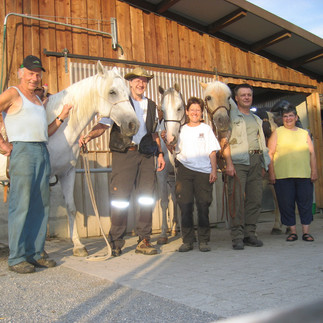









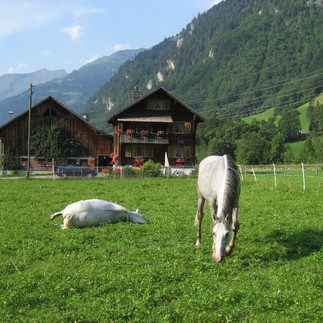













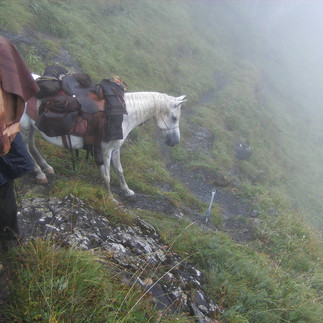





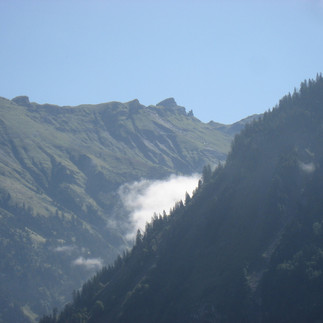












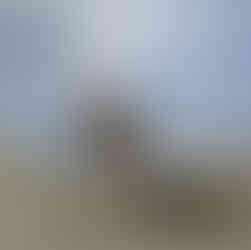


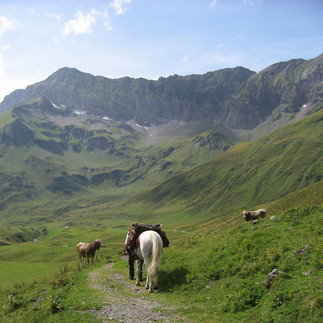





























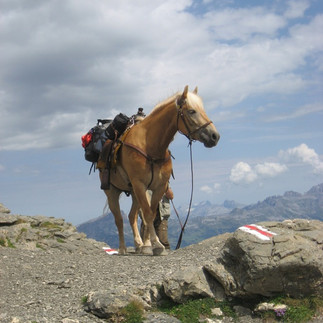






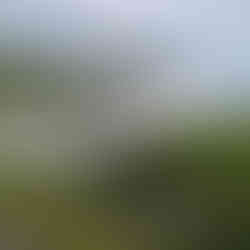























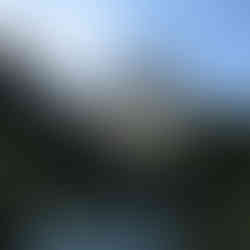







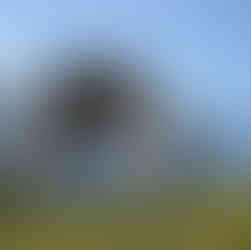















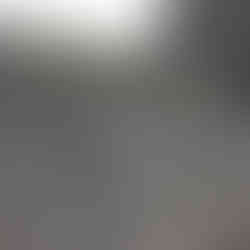












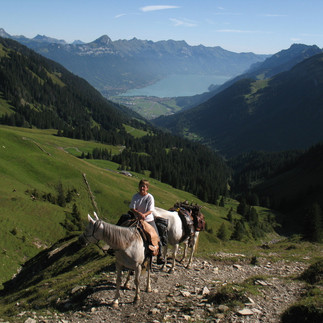

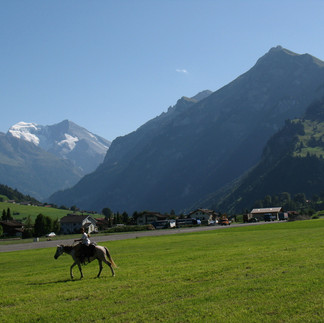
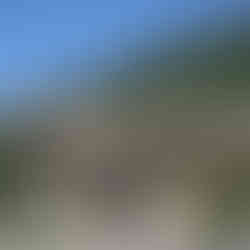
































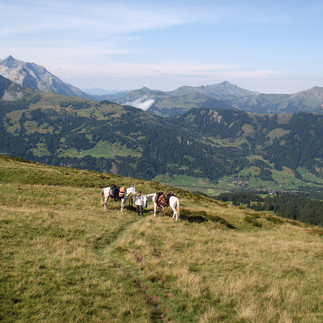






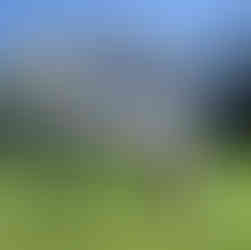






















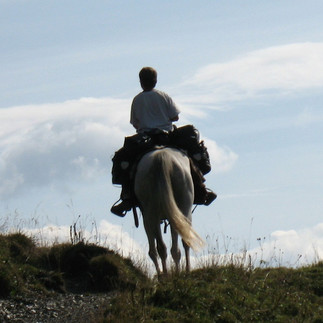










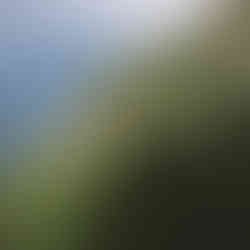















































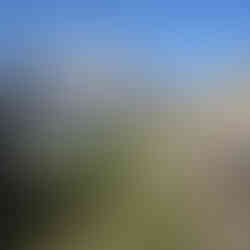















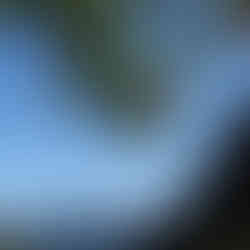





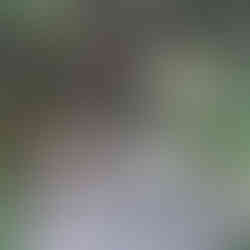

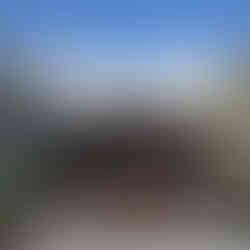






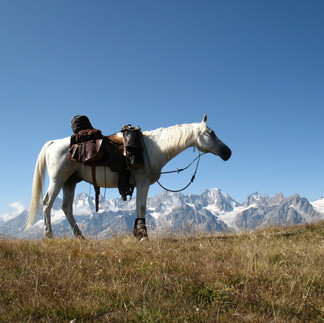

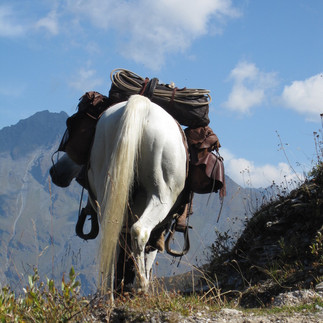







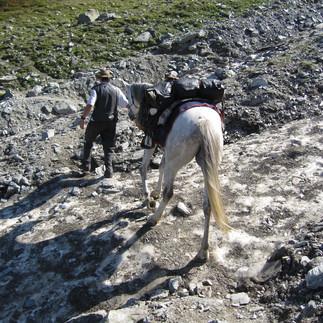
































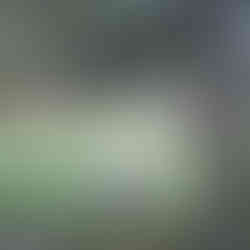







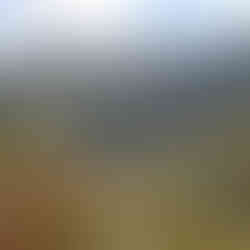






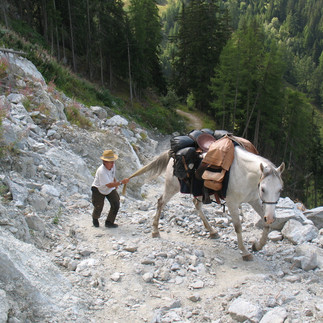






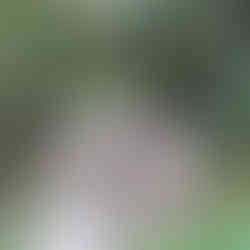







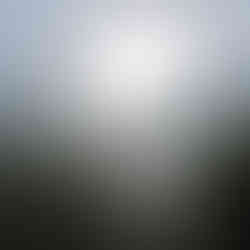












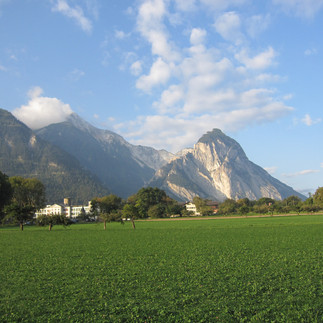










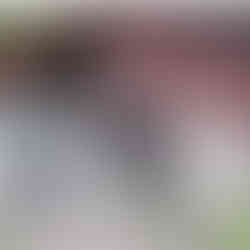













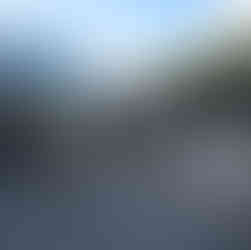







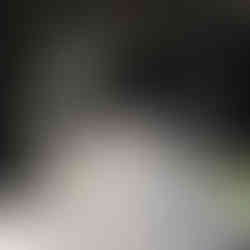


























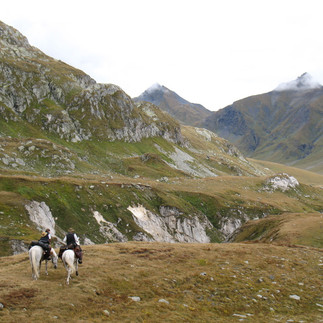



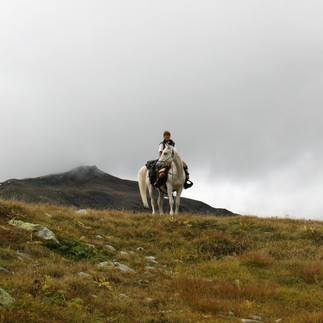
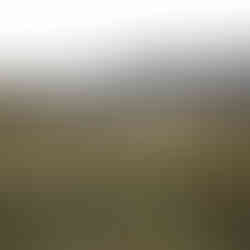

















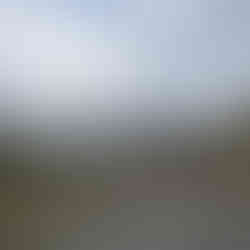




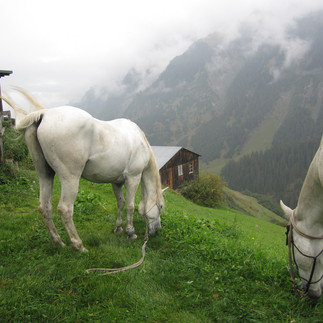




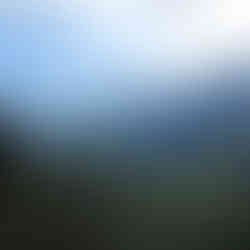




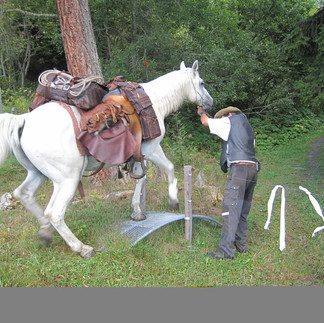












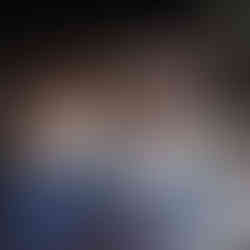










Comments